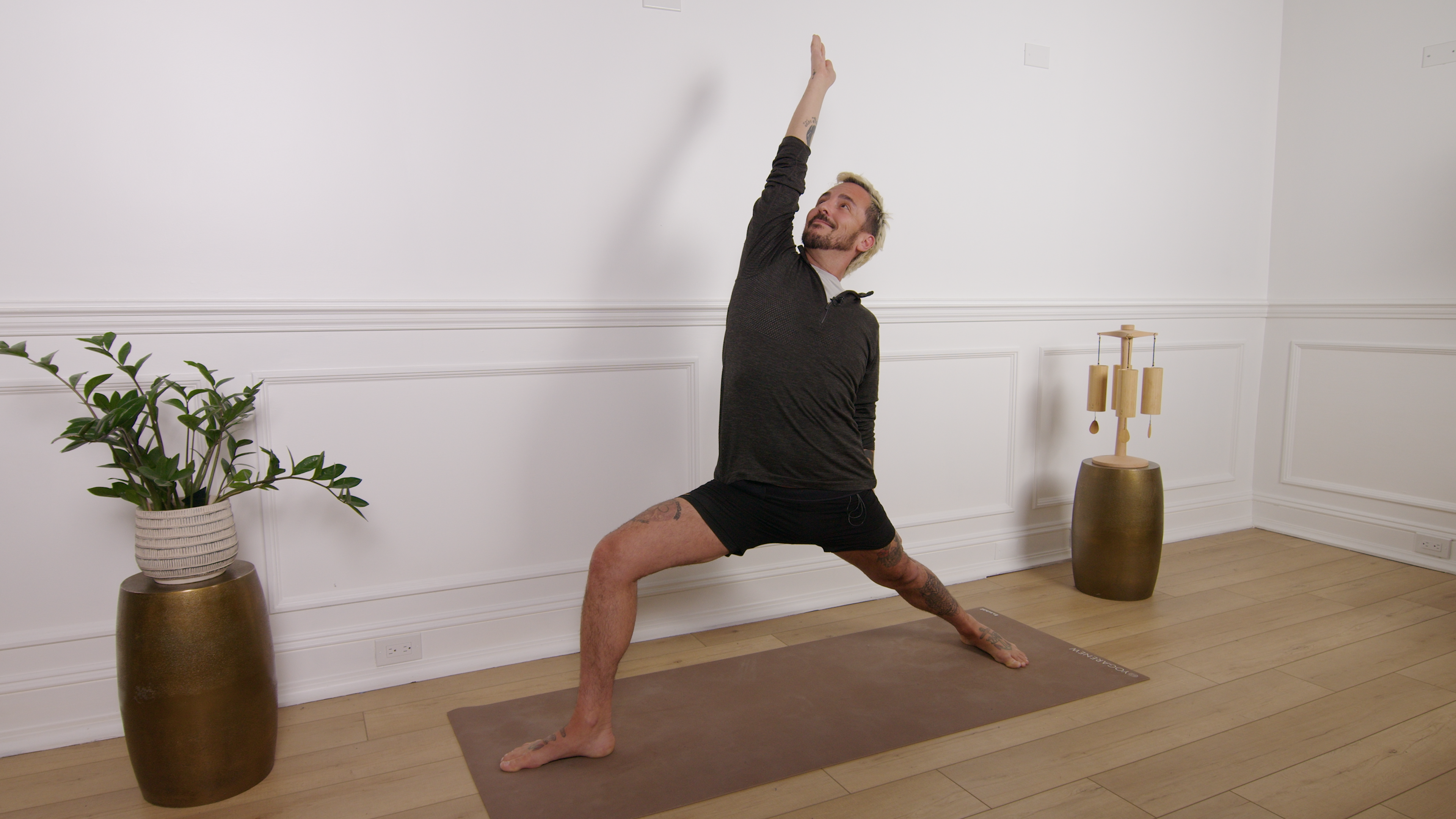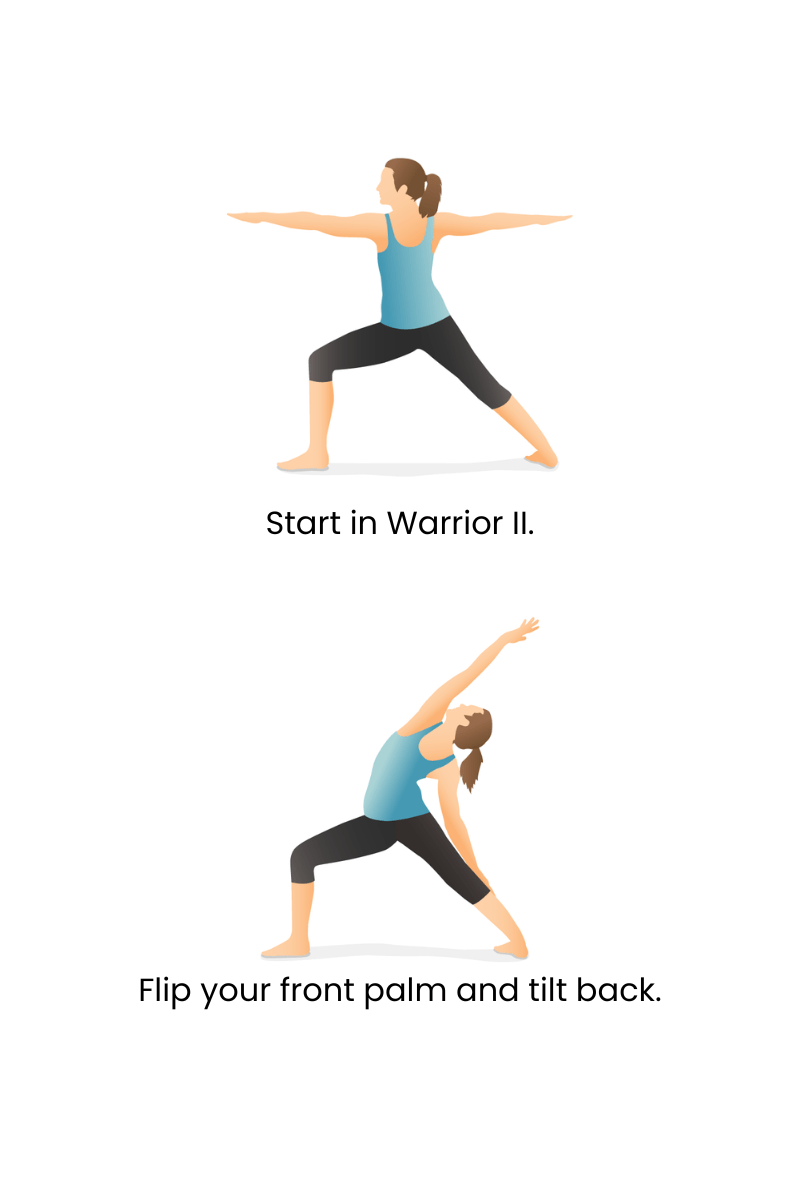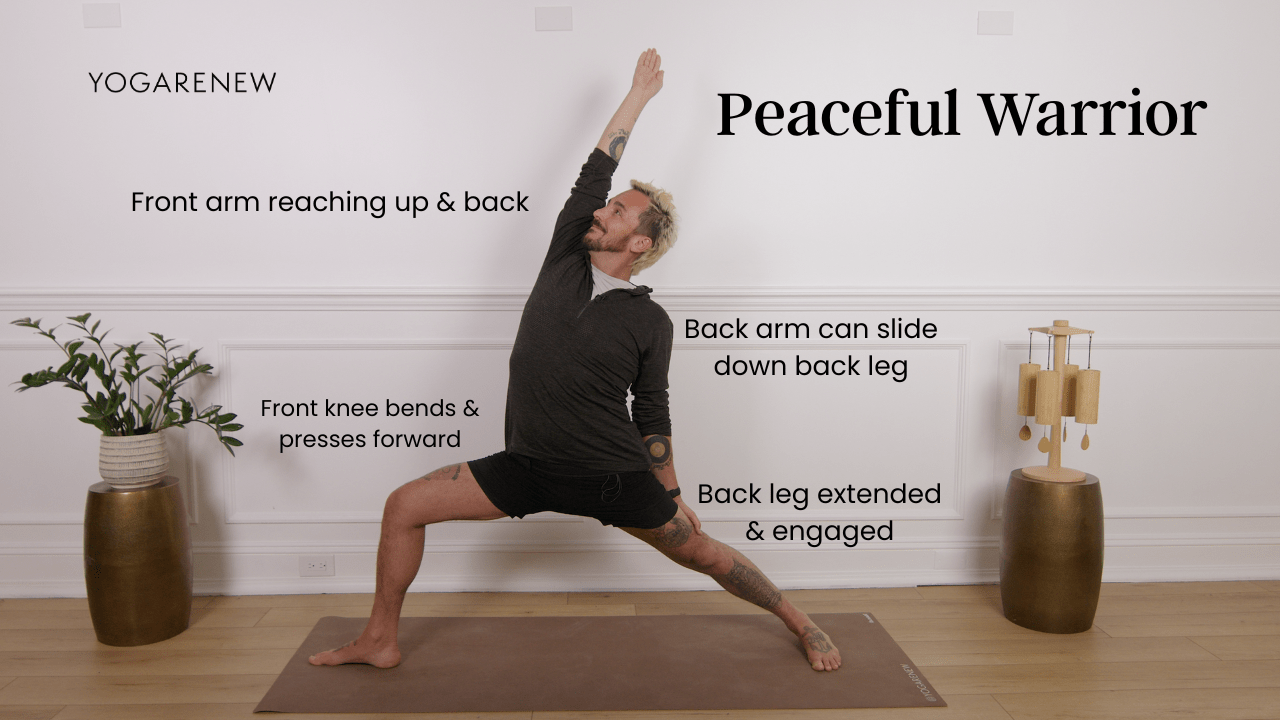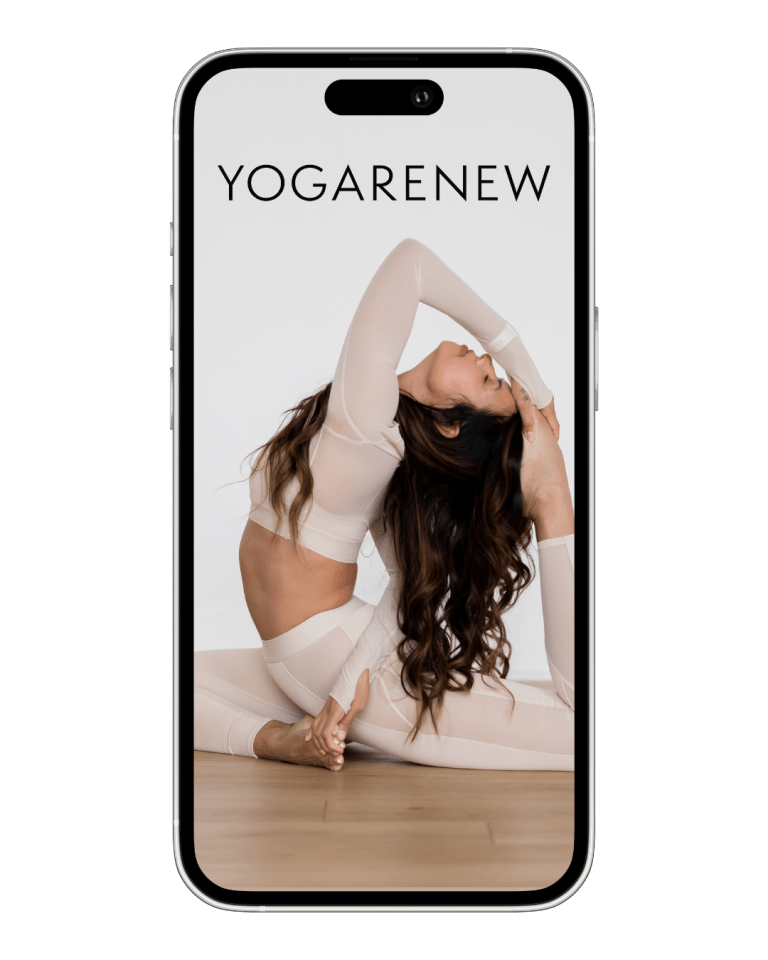What is Peaceful Warrior?
English Name: Peaceful Warrior Pose
Sanskrit Name: Viparita Virabhadrasana (pronounced vee-pah-REE-tah veer-ah-bah-DRAH-suh-nuh)
Category: Standing Pose, Side Stretch, Beginner

English Name: Peaceful Warrior Pose
Sanskrit Name: Viparita Virabhadrasana (pronounced vee-pah-REE-tah veer-ah-bah-DRAH-suh-nuh)
Category: Standing Pose, Side Stretch, Beginner
Peaceful Warrior Pose, also known as Viparita Virabhadrasana, is a graceful variation of Warrior II that combines strength, fluidity, and openness. As a standing pose, it builds stability in the legs while creating a side-body stretch and a gentle heart opener. It’s both empowering and soothing—a blend of steadiness and surrender.
While Peaceful Warrior is often included in flowing sequences like Vinyasa or Slow Flow, it can also be held longer to deepen awareness of breath, balance, and posture. The pose symbolizes calm strength and inward reflection, even while facing life’s challenges—hence its “peaceful” name.


1. Shoulder Injuries: Modify the lifted arm or keep hands at the hips
2. Neck Sensitivity: Keep gaze forward or down rather than up
3. Low Back Issues: Engage the core to avoid compression
4. Balance Challenges: Practice near a wall or shorten your stance
5. Knee Injuries: Be mindful not to overbend or torque the front knee
Peaceful Warrior Pose is a powerful fusion of strength and softness. It invites practitioners to stand firm while opening gracefully, both physically and emotionally. The posture stretches and strengthens, grounds and uplifts, and helps cultivate presence, resilience, and equanimity. It’s a moving meditation on the balance between effort and surrender.
Yes, especially when practiced mindfully. Modifications can make it very accessible.
Warrior II is more linear and grounding; Peaceful Warrior adds a backbend and side stretch element.
Absolutely—just lower the arm, keep the hand at the hip, or use a modified version.

Explore classes & pose tutorials for any style, format, duration or experience level with a free account in the YogaRenew app. Or subscribe and gain access to workshops, live classes and more.